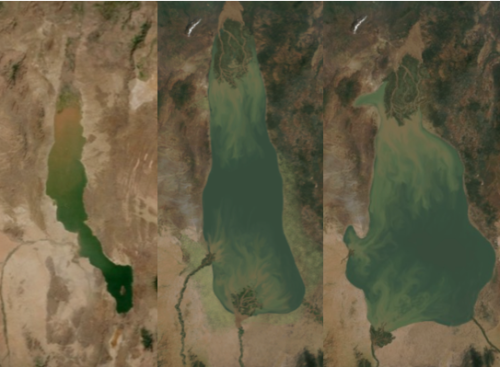
Lake Turkana (Present); Lokochot Lake (3.5 Ma); Lonyumun Lake (4.1-3.95 Ma)
The idea that the same natural laws and processes that operate on Earth today have operated in the past is an assumption many geologists use in order to better understand the geologic past. This idea is known as uniformitarianism, also defined as “the present is the key to the past”. The better one understands current day processes, the easier it will be to identify what depositional environments the geological record has preserved. With that, the students headed out to Lake Turkana in order to study modern lake shore dynamics with the hopes of getting a better understanding of the past.
Lakes are important to study, not just because we are currently living right next to the world’s largest desert lake, but because they are sediment traps and often great environments for the preservation of fossils and changes in climate. With that, the students’ lake assignment consisted of examining modern lacustrine processes and sedimentology and comparing it to Holocene (approx. 12,000 years ago to present) and Pleistocene (approx. 2.6 million years ago to 12,000 years ago) lake deposits.
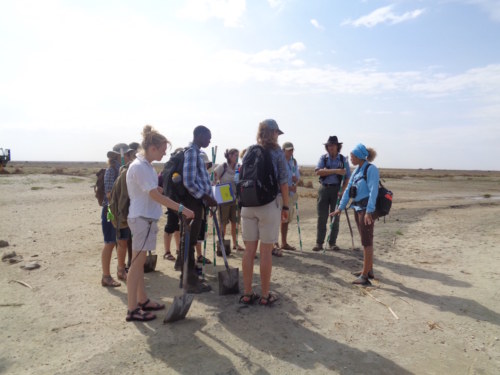
Professor Linda discussing the importance of studying current day processes
To begin, the students created a topographic profile of the lake margin from dry vegetated sand mounds to 15 meters into the lake. Creating this type of profile allowed the students to see the differences in the type of sediment and bedforms as they moved further out into the lake. They measured the changing topography by using a Jacob staff. Additionally, as the students moved from dry shoreline into the lake, they collected sediment samples. Below is an example of a high energy lake margin and different bedforms that may be seen. As you move out further from the shoreline past the area where sediment is affected by wave action, certain bedforms such as symmetrical wave ripples will be less likely.
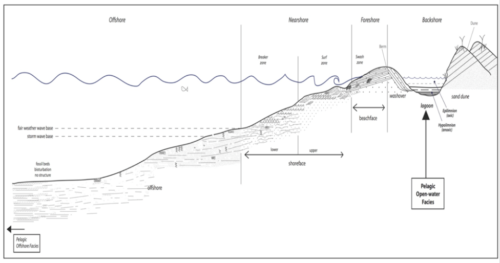
Topographic profile of a lake margin; outlines different sediment accumulation and structures as one moves more offshore. Note: This does not apply to all lakes
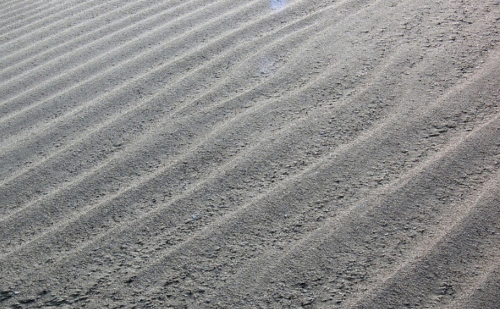
Example of wave ripples
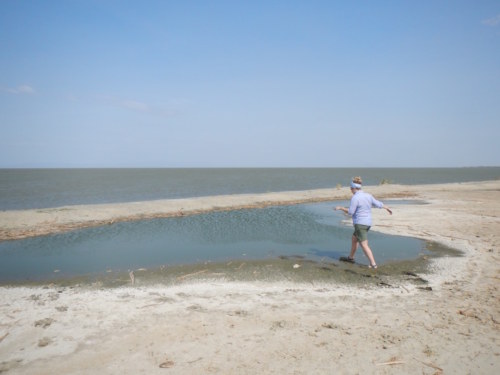
Kathryn measures the length of the beach by pacing (even through the lagoon)
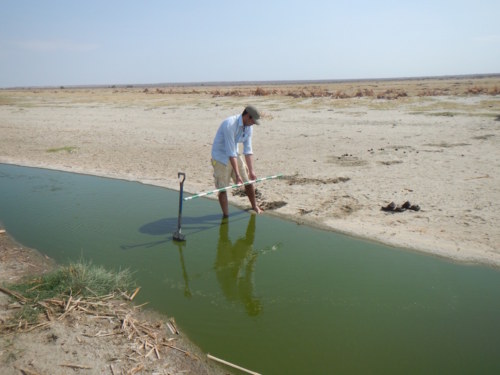
Max using his Jacob staff and shovel to measure distance
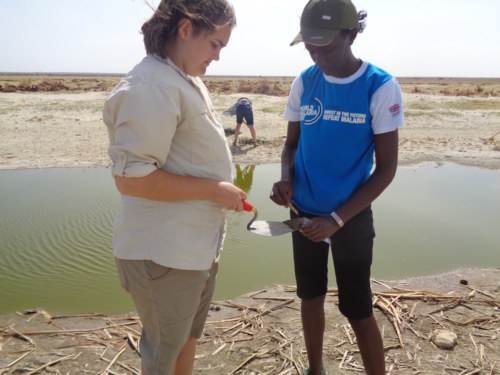
Morgan collects a sample from the beach so she can later analyze the sediments

Esther loves sampling!!
To relate back to class, the students learned about an important concept in sedimentology that was applicable to this activity and that is Walther’s Law. Walther’s Law basically states that any type of sediment or sedimentary structure that is deposited vertically will also be seen in the same order laterally. This concept was first stated by Johannes Walther in 1894 and is still widely accepted and used today.

Walther’s law: Note similarities in vertical distribution and lateral distribution of sediments
With that, after the students analyzed the topography of the lake, looking at changing lithology and sedimentary structures, they next had to dig a trench! The purpose of digging a trench was to expose a profile of modern day processes in a vertical succession. Thinking back to Walther’s Law, it was expected to see similar bedforms in the trench profile and the topographic profile due to the relationship between vertical and lateral sediment accumulation.
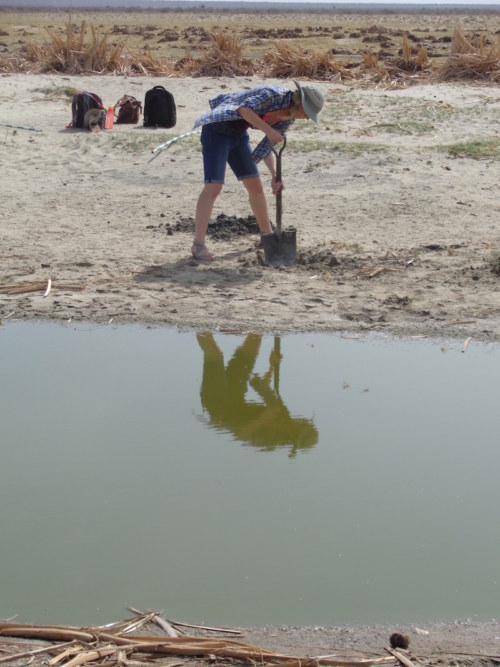
Emily digs a trench by the lagoon in order to see the contrast when digging closer to the shoreline
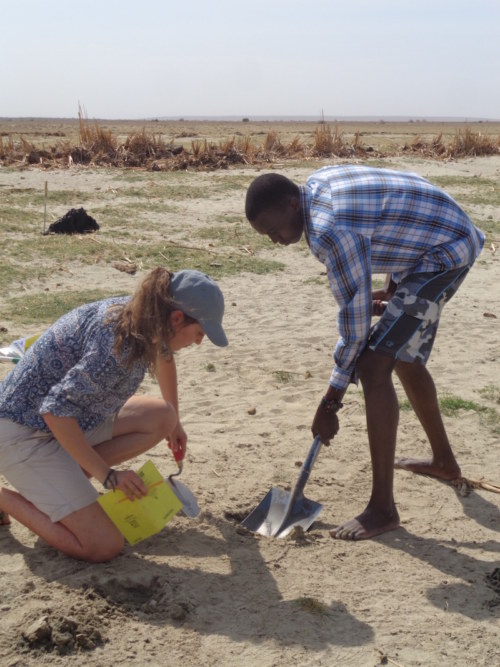
Toby and Millie start digging too!
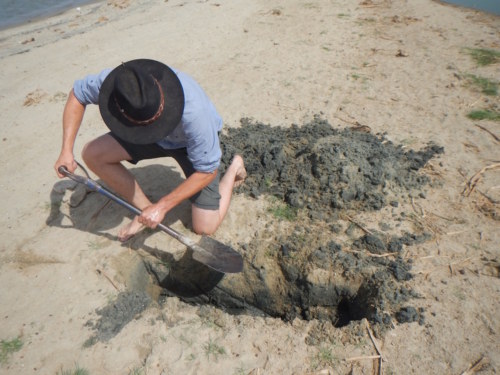
What will he find???
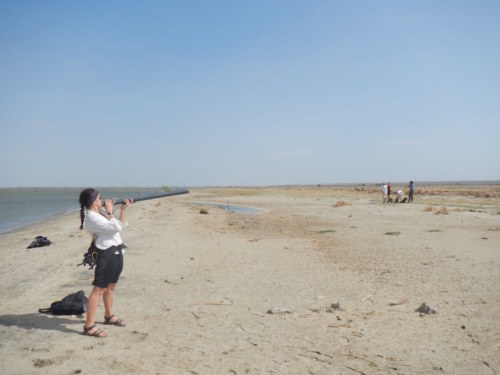
TA Jayde calls out to the students to see if they need help digging
In addition to seeing the vertical and lateral connections, the trench profile preserved evidence of recent changes in lake levels. The lake level has been dropping lately and the large planar cross-beds are seen up on the beach berm whereas presently, this structure is forming 0.5 meters lower at the modern beach face. This migration of cross-bedding signifies the lake experiencing a regression, or in other words, lake levels dropping. If the students were to view a regression sequence in the trench profile, they would see sediment grain size gradually go from fine to coarse. On the other hand, if a transgression occurs, which signifies a rise in lake levels, the trench profile will show grain size gradually go from coarse to fine sediments. Based off of these general trends, the students examined their profiles and determined what the current lake deposits were telling them.

Transgression: sediments fine upwards

Regression: sediments coarsen upwards
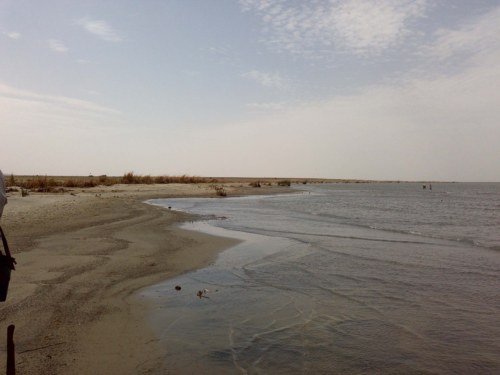
Note the beach face and how it is gradually sloping down
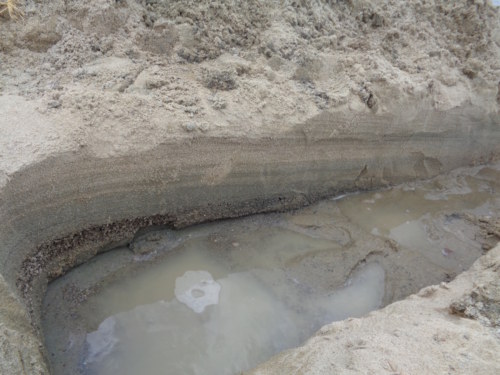
Look at that stratigraphy! Look at the grain sizes and how the lamination is sloping to the right…what does it mean??
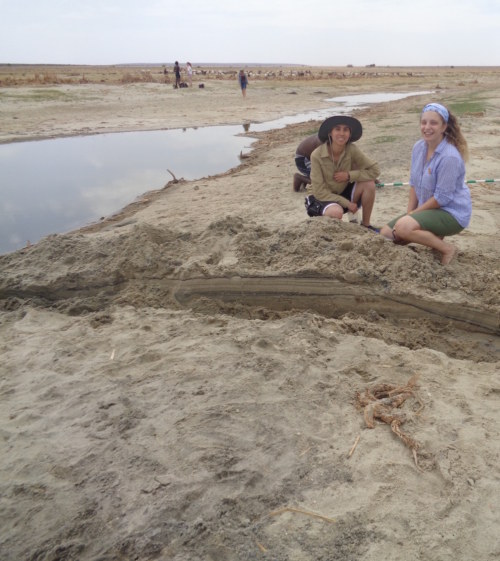
Kathryn and Carla are excited about their beautiful trench profile!
Now that the students had a feel for interpreting modern lake margin deposits and what they were saying about environmental changes, it was time to study another environment! Next stop…the Ileret delta!





